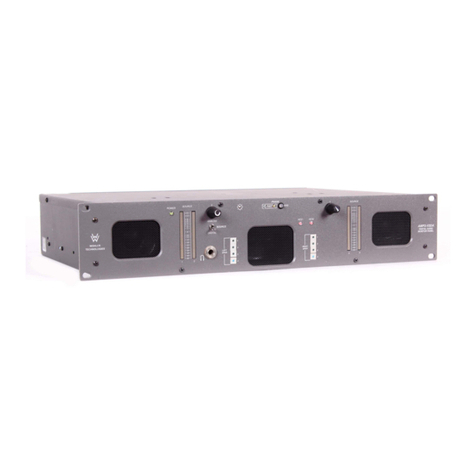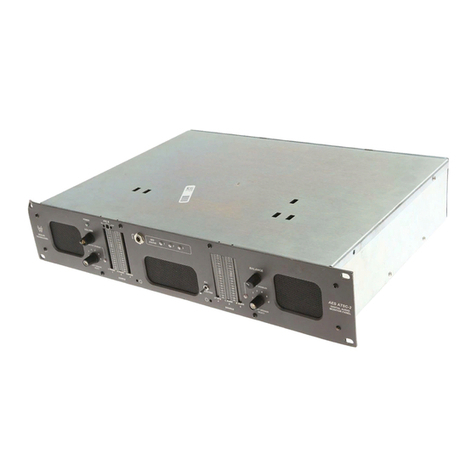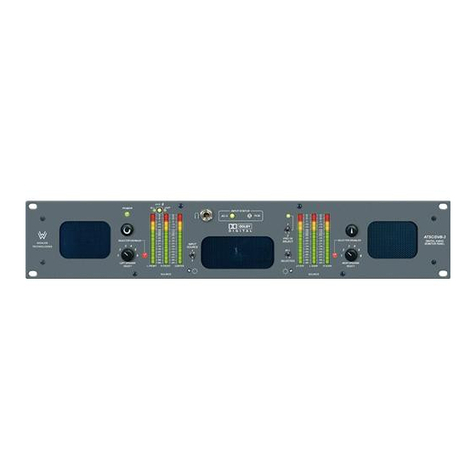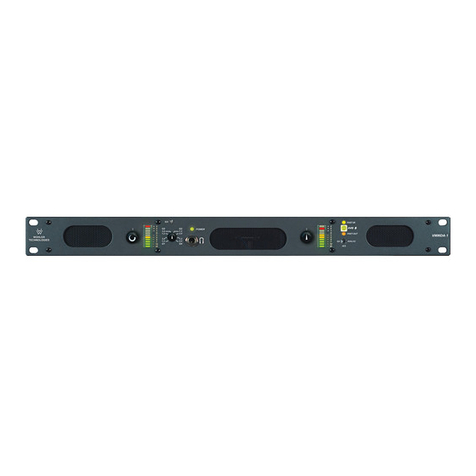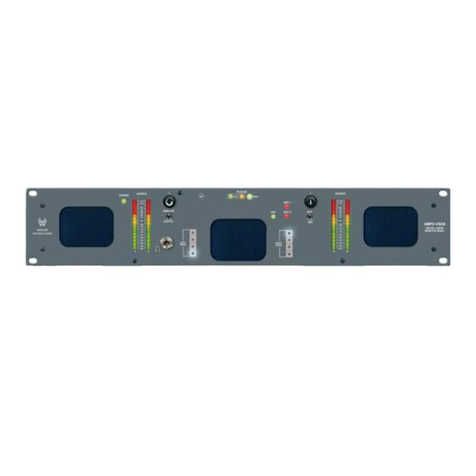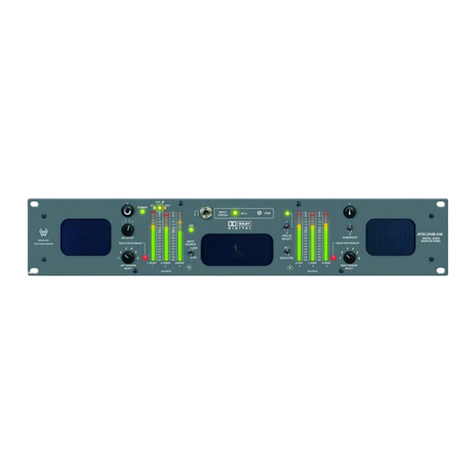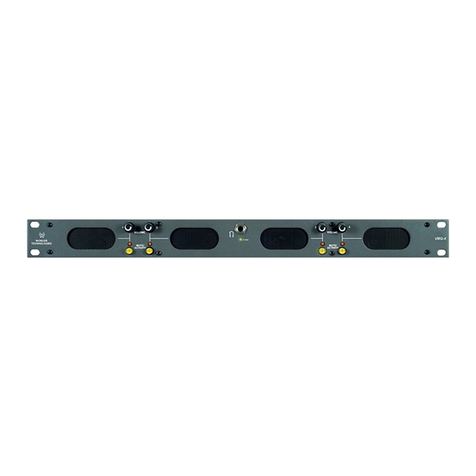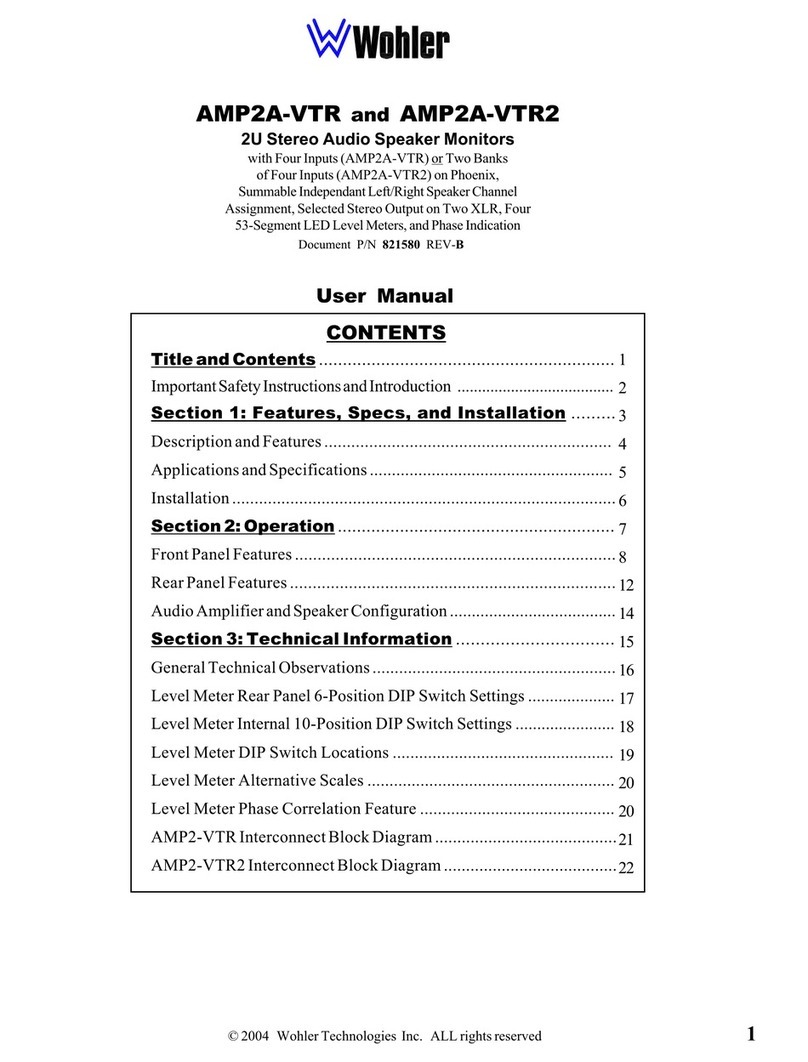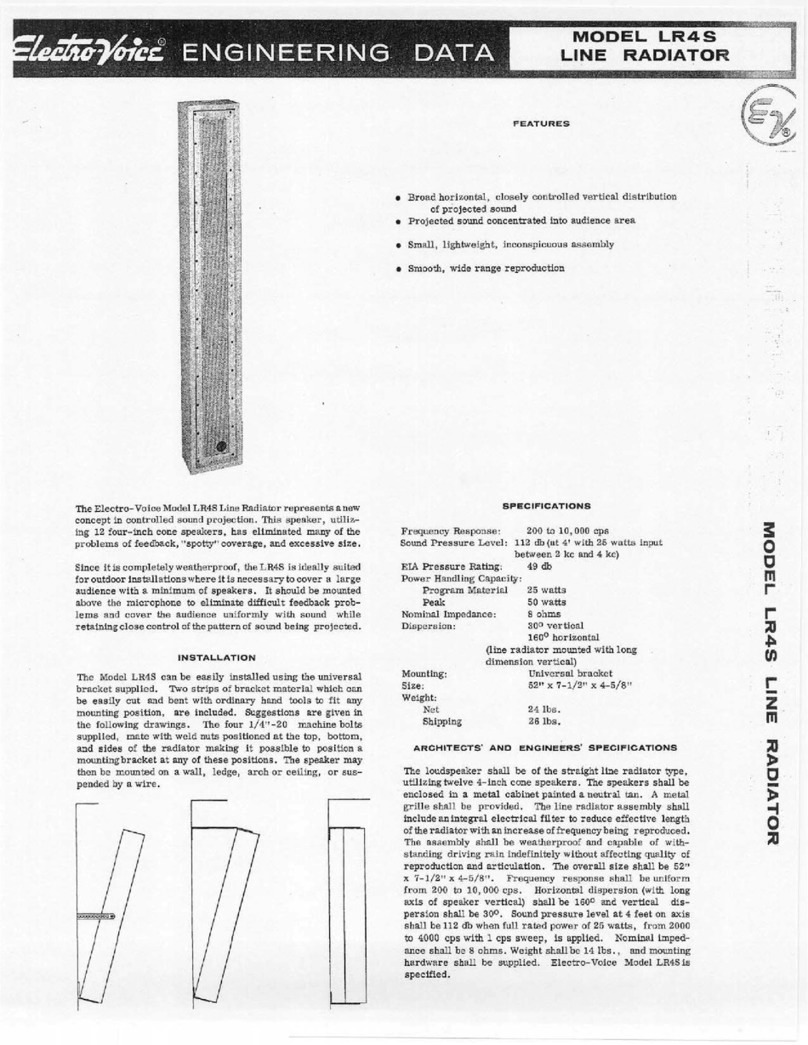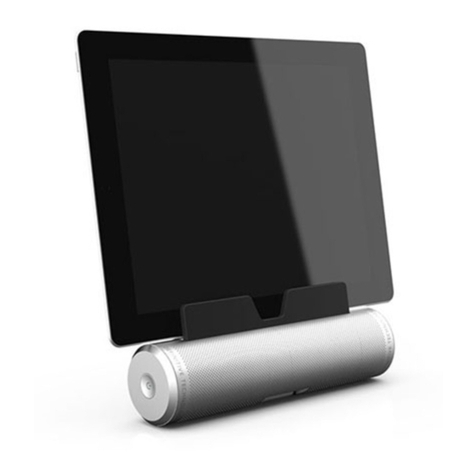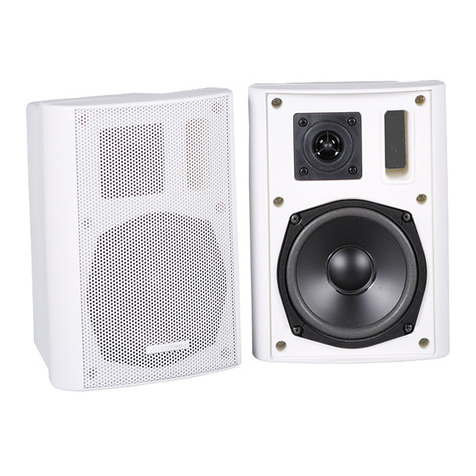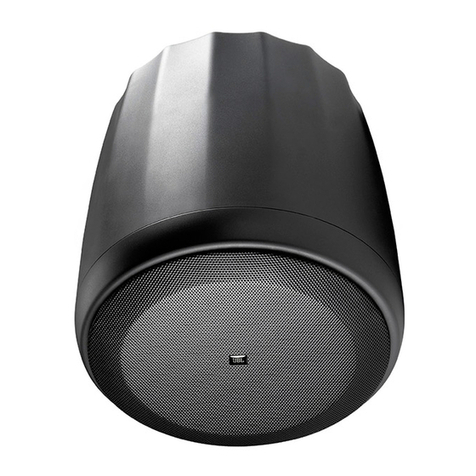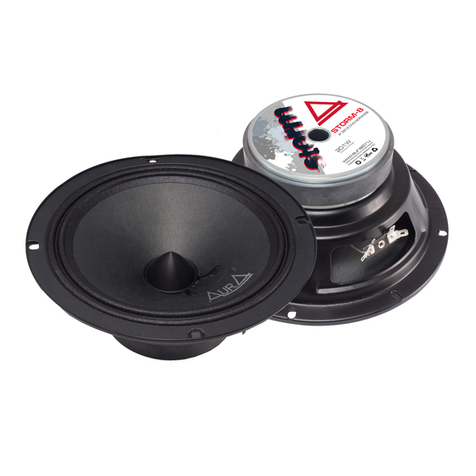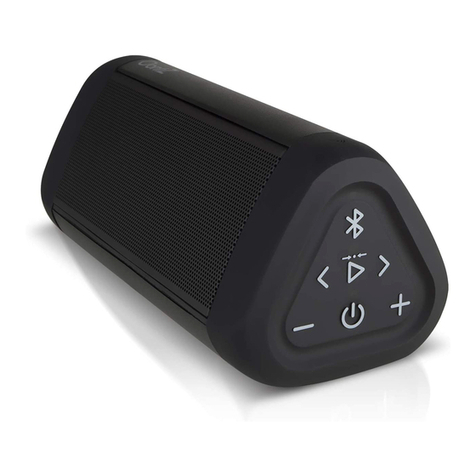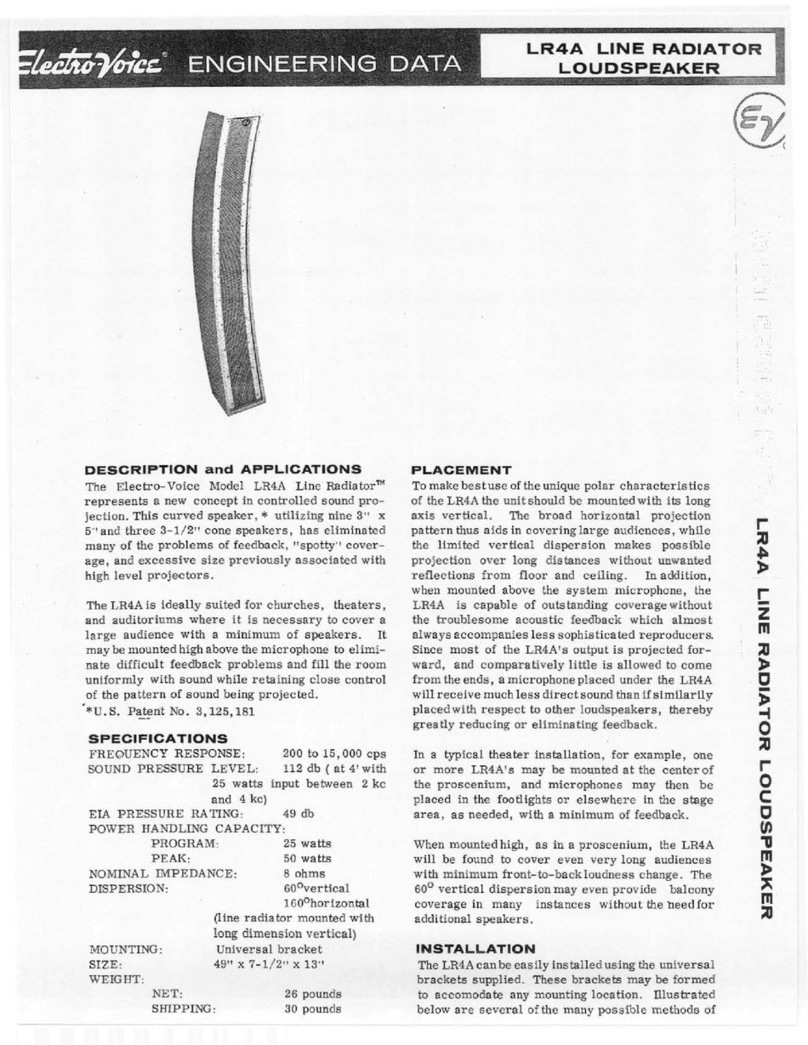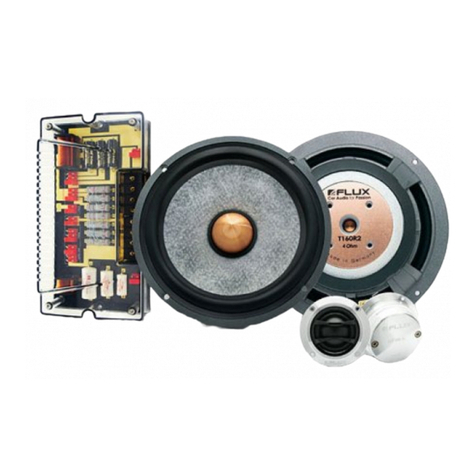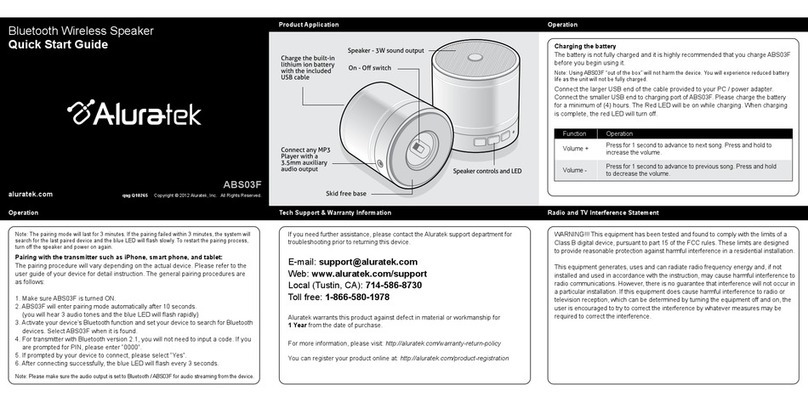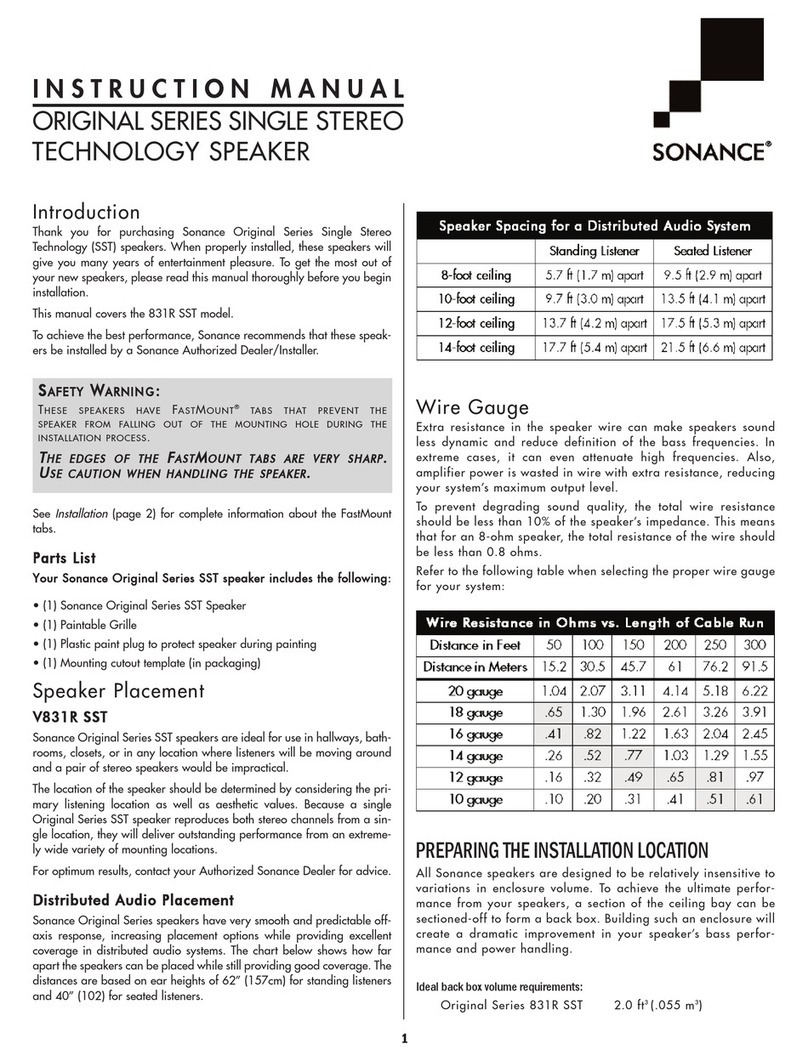
©2004 Wohler Technologies Inc. ALLrights reserved
8
AMP2-VSDA/AVandAMP2-VSDA/AM UserManual P/N 821576 Rev-B
6
7
8
4
5
1
2
3
Please refer to Figure-2a on the facing page to familiarize yourself with the front panel features of the AMP2-VSDA/AV and
AMP2-VSDA/AM units. The following sections describe these features and are referenced, by number, to Figure-2a.
Front Panel Features Section2: Operation
(Continued)
Speakers
The monitor features two mid-range speakers (left and right) and one woofer speaker. Two amplifier/driver combinations
handle midrange and high frequency information in the left and right (stereo) speaker channels, while the third channel
reproduces and sums the left and right channel information below the 500 Hz crossover point in the woofer (bass) speaker(s).
Note that the woofer channel is NOT a dedicated LFE (subwoofer) or Center channel. See page 16 for more information
concerning the AMP2 Series audio amplifier/speaker configuration.
Audio Level Meters - Mechanical
Audio levels for the left and right sources selected for monitoring are respectively displayed in the left and right mechanical
level meters. The AMP2-VSDA/AV model uses meters exhibiting VU ballistic characteristics. The AMP2-VSDA/AM
model uses meters exhibiting PPM ballistic characteristics. See page 23 for Threshold Level adjustment and settings for
the VU and PPM type of meter.
Speaker Assign Channel Buttons (Left and Right)
Use the left bank of four buttons to assign one to four of the four available channels for monitoring from the left speaker
channel. Use the right bank of four buttons to assign one to four of the four available channels for monitoring from the
right speaker channel. Channel buttons toggle On/Off and will light up BLUE to indicate they are selected.
Operation for channel selection for each bank of four buttons is as follows:
Single Channel Select: Press and release a single channel button to select that channel (and deselect any previous
selection). Pressing and releasing the selected channel button again will deselect it.
Multi-Channel Select (Summing): Press and hold down a desired channel button, then press other channel buttons to
add (sum) additional channels (or press any again to deselect). Release all buttons to accept the selection set. When
multiple channels are selected, pressing and holding an already selected channel button will allow further modification to
the selection set. Releasing all buttons accepts the new selection set. Pressing and immediately releasing an already
selected channel button will select only it and deselect all other channel selections. Note that if channels assigned to
either the left or right level meters are multi-channel (summed), then the respective level meter will indicate summed audio
levels.
If the user presses a previously selected (lighted) channel button, but then decides not to make any changes to the selection
set, the user should keep the button depressed for at least 1.5 seconds before releasing it.This will preserve the current
selection set as though the button was never pushed.
Power LED
This LED glows GREEN to indicate the unit is connected to mains power and an operation voltage is present.
AES Status LEDs (AES 1 and AES 2)
These two bi-color GREEN/RED LEDs (AES1 and AES2) indicate the input presence and status of the two AES input
signals. Either LED glows GREEN as long as a valid AES/EBU digital datastream for the associated input channel is
being received. Either LED glows RED to indicate errors in signal reception or data errors (if the data has been tagged
as inappropriate for conversion to analog by having the validity bit set). These LEDs function whether or not the AES
digital signals are selected for monitoring through the unit.
Note: If you wish to disable data error indication (and leave only indication of signal reception errors) you can place
jumpers on H14 and H18 of the 919050 AES-to-Analog conversion PCB. See page 22 for component locations.
Headphone Jack
Select the headphone audio sources as you would for the internal speakers. When you plug in headphones, the speakers will
mute. This jack accepts a standard 1/4” phone type stereo plug.
Volume Control
This controls the loudness of the audio reproduced by the internal speakers or connected headphone. Clock-wise rotation
of this control increases the loudness of the monitored audio.
Analog/Digital Source Select Switch
This two position toggle switch allows the operator to choose between two primary input sources; ANALOG or DIGITAL.
When this toggle switch is set to ANALOG, the unit will monitor the signals as input on the rear panel ANALOG IN
XLR connectors (Item K, page 14). When this toggle switch is set to DIGITAL, the unit will monitor the digital
source (AES or SDI) as selected by the AES/SDI Digital Source Select Switch (Item 10, page 10).
1)
2)


